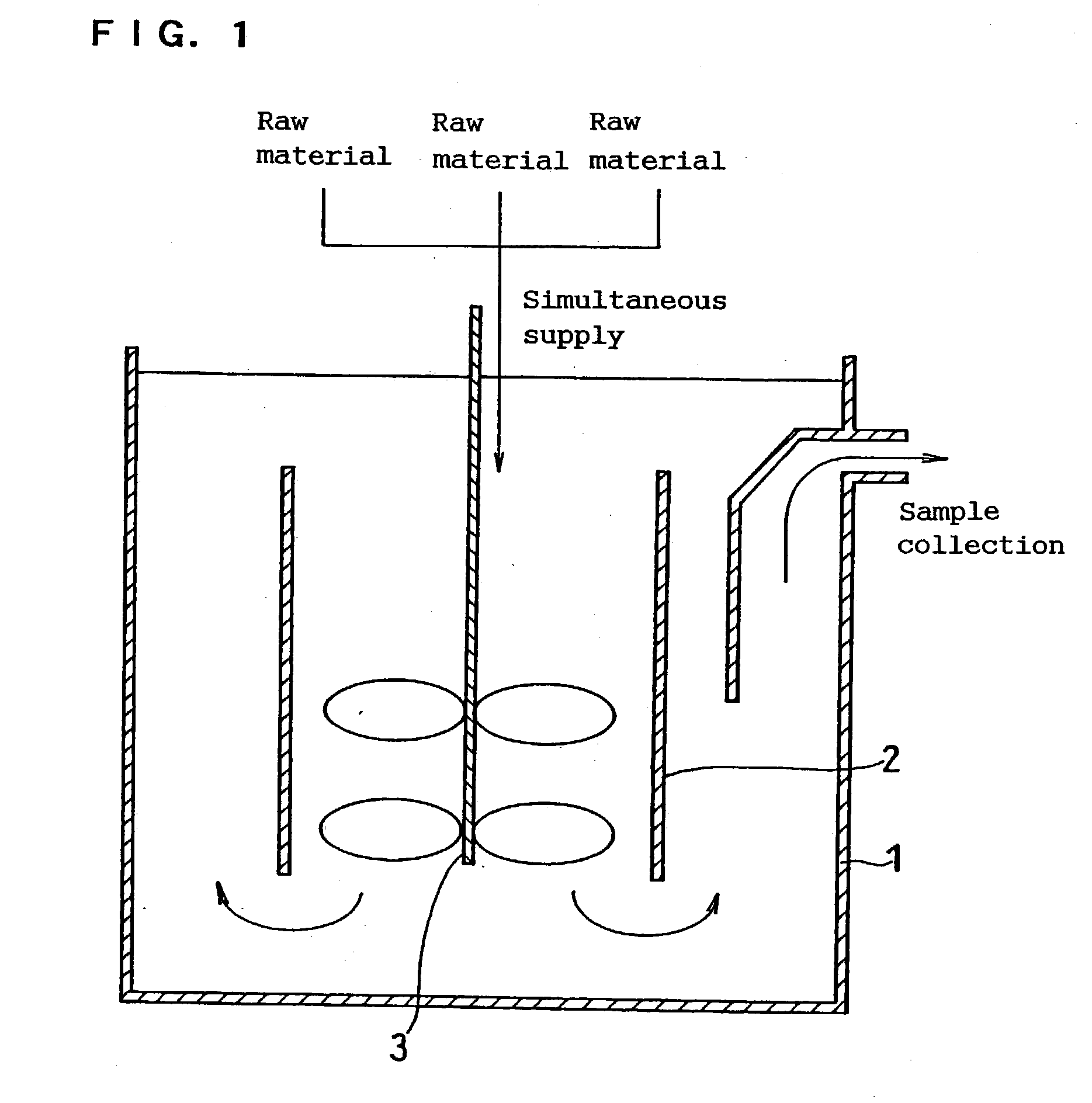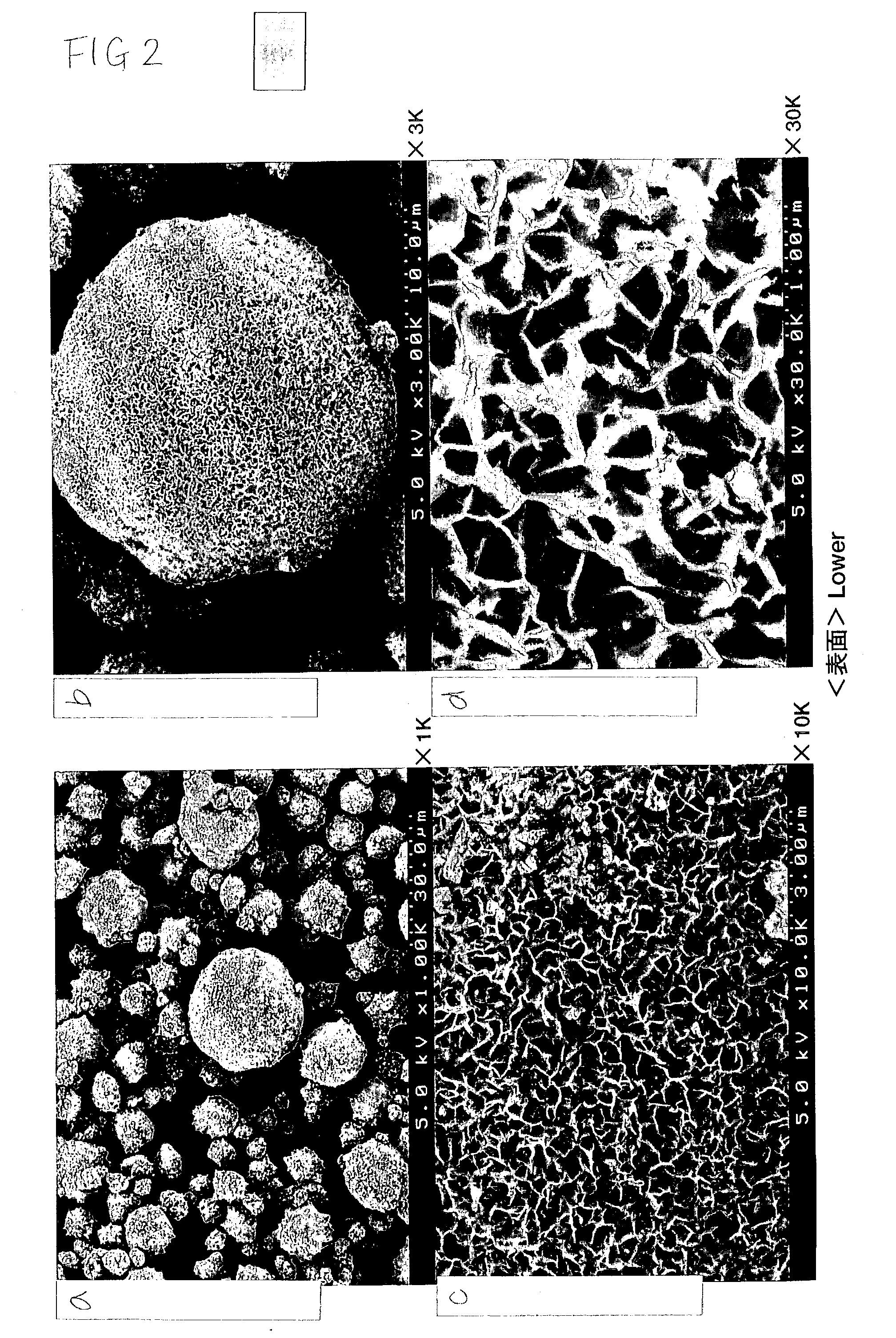Positive-electrode active material and nonaqueous-electrolyte secondary battery containing the same
a technology of active materials and secondary batteries, which is applied in the direction of secondary cells, service/maintenance of secondary cells, and manganates/permanentates, etc., can solve the problems of high cost of licoo.sub.2, difficult to obtain composite oxides having single-phase crystal structures, and high cost of co. , to achieve the effect of increasing resistance, enhancing safety of the battery, and reducing the cost of co
- Summary
- Abstract
- Description
- Claims
- Application Information
AI Technical Summary
Benefits of technology
Problems solved by technology
Method used
Image
Examples
example 2
Reduction in Polarization
[0201] LiNiO.sub.2 and LiMnO.sub.2 are not so good in electron conductivity. Therefore, large polarization occurs in the final stage of discharge, causing decrease in capacity particularly during high-rate discharge. The nickel element and the manganese element have different electron structures. When these elements are incorporate together in the atomic level, one electron structure interacts with the electron structure of the neighboring different element.
[0202] In the combination of nickel and manganese, the above phenomenon especially functions to improve the electron conductivity of the material, whereby conductivity is rendered. This is considered verifiable by computational chemistry such as a DV-x.alpha. Method.
[0203] When the composition of the oxide is LiNi.sub.1 / 2Mn.sub.1 / 2O.sub.2, polarization can clearly be reduced compared with the cases of LiNiO.sub.2 and LiMnO.sub.2. Further, polarization can be reduced by adding another transition metal elem...
example 3
Stability of Material
[0205] When Li is removed from LiNiO.sub.2 by charging, LiNiO.sub.2 becomes very unstable and is reduced to NiO releasing oxygen at a comparatively low temperature. This is fatal when LiNiO.sub.2 is used as the positive electrode active material of a battery, and the battery may possibly be led to thermal runaway, that is, ignition or explosion due to oxygen generated.
[0206] The above problem can be improved by incorporating manganese at a ratio of 1:1. The batteries used in Example 1 were overcharged to as high as 4.8 V, and then disassembled to collect the positive electrode mixtures. The mixtures were measured with a differential scanning calorimeter (DSC) as they were. The heat peaks observed at the lowest temperature obtained at this time are shown in Table 4.
[0207] It is well known that the thermal stability improves by adding aluminum. The test described above was also performed for a positive electrode active material obtained by adding aluminum to LiNi....
PUM
| Property | Measurement | Unit |
|---|---|---|
| particle size | aaaaa | aaaaa |
| particle size | aaaaa | aaaaa |
| temperature | aaaaa | aaaaa |
Abstract
Description
Claims
Application Information
 Login to View More
Login to View More - R&D
- Intellectual Property
- Life Sciences
- Materials
- Tech Scout
- Unparalleled Data Quality
- Higher Quality Content
- 60% Fewer Hallucinations
Browse by: Latest US Patents, China's latest patents, Technical Efficacy Thesaurus, Application Domain, Technology Topic, Popular Technical Reports.
© 2025 PatSnap. All rights reserved.Legal|Privacy policy|Modern Slavery Act Transparency Statement|Sitemap|About US| Contact US: help@patsnap.com



